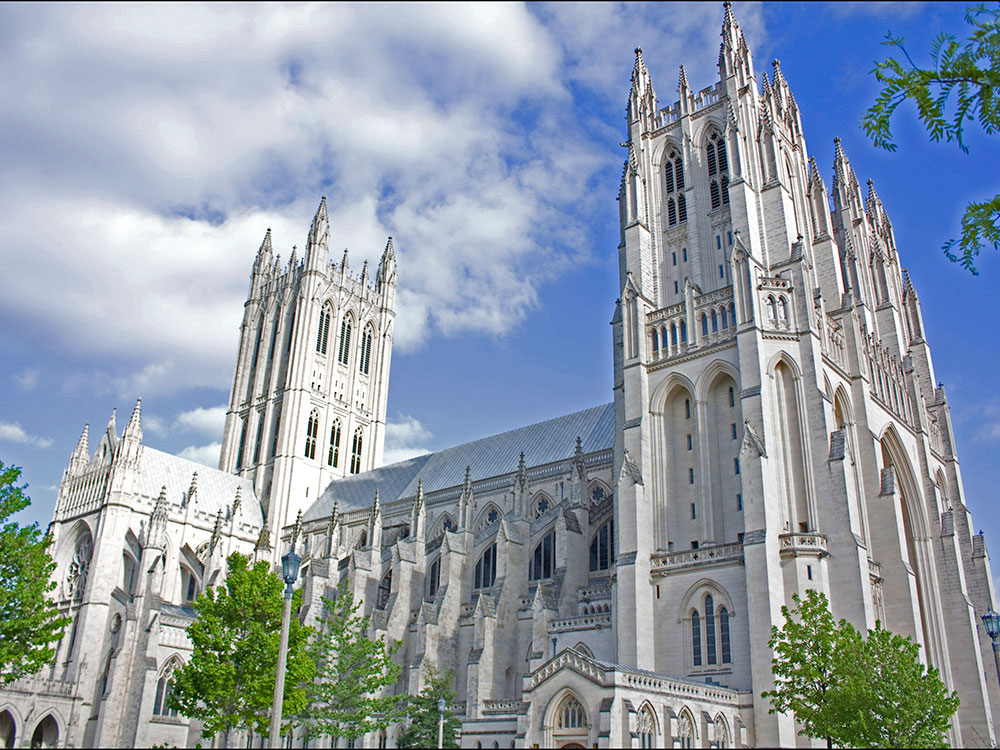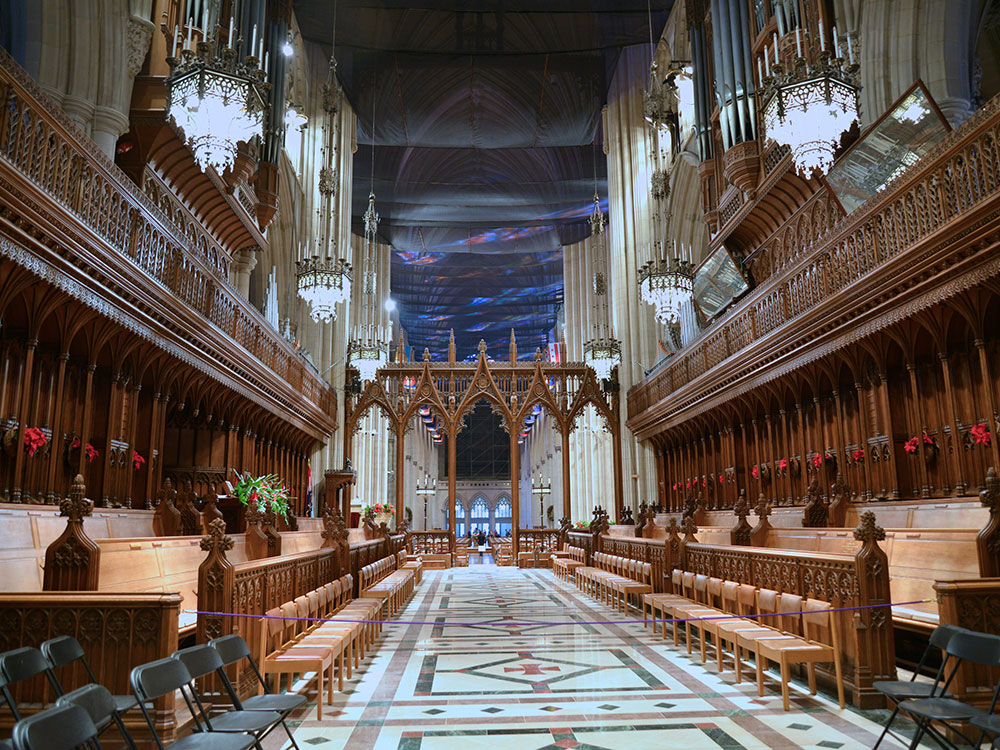Neo-Gothic designed cathedral is the second-largest church building in the US, and the third-tallest building in Washington, D.C.
General Information
The Washington Monument interior open daily from 9am to 5pm
The monument is closed on December 25, Christmas Day and July 4, Independence Day.
Non-refundable reservation fee of $1.50 per ticket to enter monument and ride the elevator to the 500 foot observation deck.
No pets allowed inside monument
The Cathedral Church of Saint Peter and Saint Paul, commonly known as Washington National Cathedral, is a cathedral of the Episcopal Church in Washington, D.C. The structure is of Neo-Gothic design closely modeled on English Gothic style of the late fourteenth century. It is the second-largest church building in the United States, and the third-tallest building in Washington, D.C.

The Protestant Episcopal Cathedral Foundation, under the first seven Bishops of Washington, erected the cathedral under a charter passed by the United States Congress on January 6, 1893. Construction began on September 29, 1907, when the foundation stone was laid in the presence of President Theodore Roosevelt and a crowd of more than 20,000, and ended 83 years later when the "final finial" was placed in the presence of President George H. W. Bush in 1990.
The cathedral stands at Massachusetts and Wisconsin Avenues in the northwest quadrant of Washington. It is listed on the National Register of Historic Places. In 2007, it was ranked third on the List of America's Favorite Architecture by the American Institute of Architects.
The cathedral's final design shows a mix of influences from the various Gothic architectural styles of the Middle Ages, identifiable in its pointed arches, flying buttresses, a variety of ceiling vaulting, stained-glass windows and carved decorations in stone, and by its three similar towers, two on the west front and one surmounting the crossing.
The structure consists of a long, narrow rectangular mass formed by a nine-bay nave with wide side aisles and a five-bay chancel, intersected by a six-bay transept. Above the crossing, rising 301 ft (92 m) above the ground, is the Gloria in Excelsis Tower; its top, at 676 ft (206 m) above sea level, is the highest point in Washington. The Pilgrim Observation Gallery—which occupies a space about 3/4ths of the way up in the west-end towers—provides sweeping views of the city. Unique in North America, the central tower has two full sets of bells—a 53-bell carillon and a 10-bell peal for change ringing; the change bells are rung by members of the Washington Ringing Society. The cathedral sits on a landscaped 57-acre (23 ha) plot on Mount Saint Alban. The one-story porch projecting from the south transept has a large portal with a carved tympanum. This portal is approached by the Pilgrim Steps, a long flight of steps 40 feet (12 m) wide.
Most of the building is constructed using a buff-colored Indiana limestone over a traditional masonry core. Structural, load-bearing steel is limited to the roof's trusses (traditionally built of timber); concrete is used significantly in the support structures for bells of the central tower, and the floors in the west towers.
The pulpit was carved out of stones from Canterbury Cathedral; Glastonbury Abbey provided stone for the bishop's formal seat, the cathedra. The high altar, the Jerusalem Altar, is made from stones quarried at Solomon's Quarry near Jerusalem, reputedly where the stones for Solomon's Temple were quarried. In the floor directly in front of that altar are set ten stones from the Chapel of Moses on Mount Sinai, representing the Ten Commandments as a foundation for the Jerusalem Altar.
There are many other works of art including over two hundred stained glass windows, the most familiar of which may be the Space Window, honoring mankind's landing on the Moon, which includes a fragment of lunar rock at its center; the rock was presented at the dedication service on July 21, 1974, the fifth anniversary of the Apollo 11 mission. Extensive wrought iron adorns the building, much of it the work of Samuel Yellin. A substantial gate of forged iron and carbon steel by Albert Paley was installed on the north side of the crypt level in 2008. Intricate woodcarving, wall-sized murals and mosaics, and monumental cast bronze gates can also be found. Most of the interior decorative elements have Christian symbolism, in reference to the church's Episcopal roots, but the cathedral is filled with memorials to persons or events of national significance: statues of Washington and Lincoln, state seals embedded in the marble floor of the narthex, state flags that hang along the nave, stained glass commemorating events like the Lewis and Clark expedition and the raising of the American flag at Iwo Jima.
This article uses material from the Wikipedia article "Washington National Cathedral" which is released under the Creative Commons Attribution-Share-Alike License 3.0
Washington National Cathedral Pics

-750.jpg)
-750.jpg)

